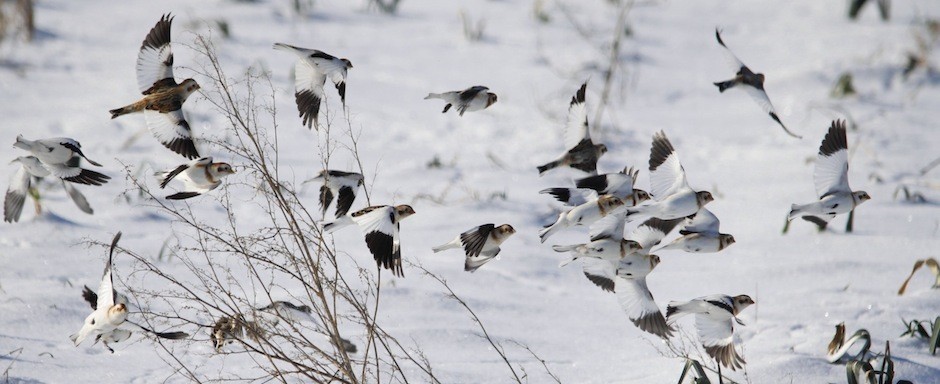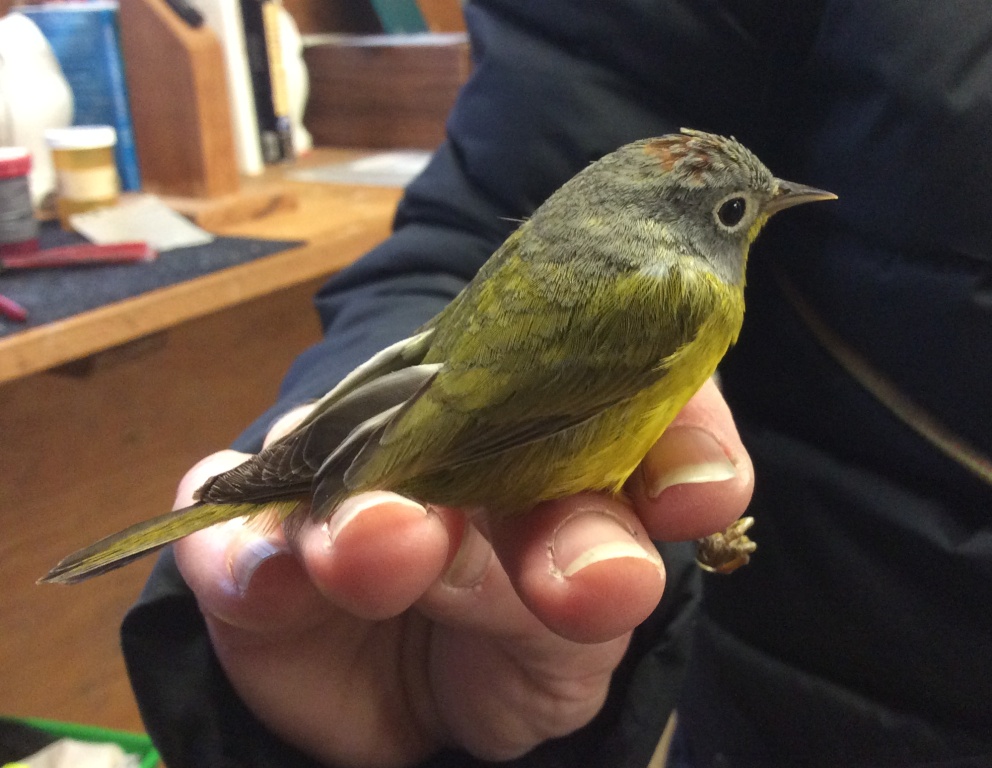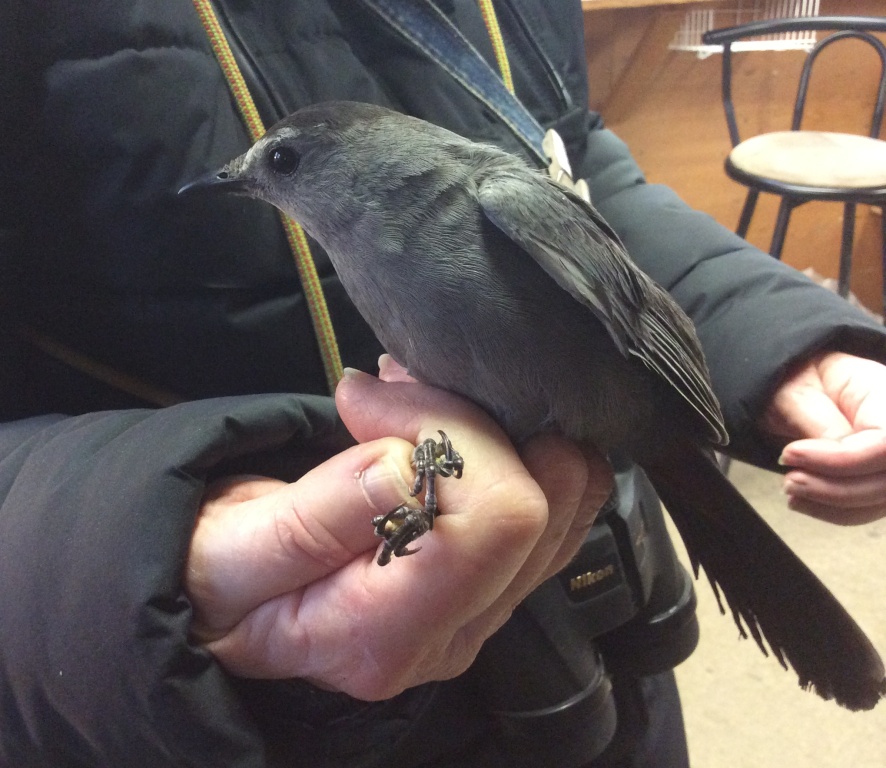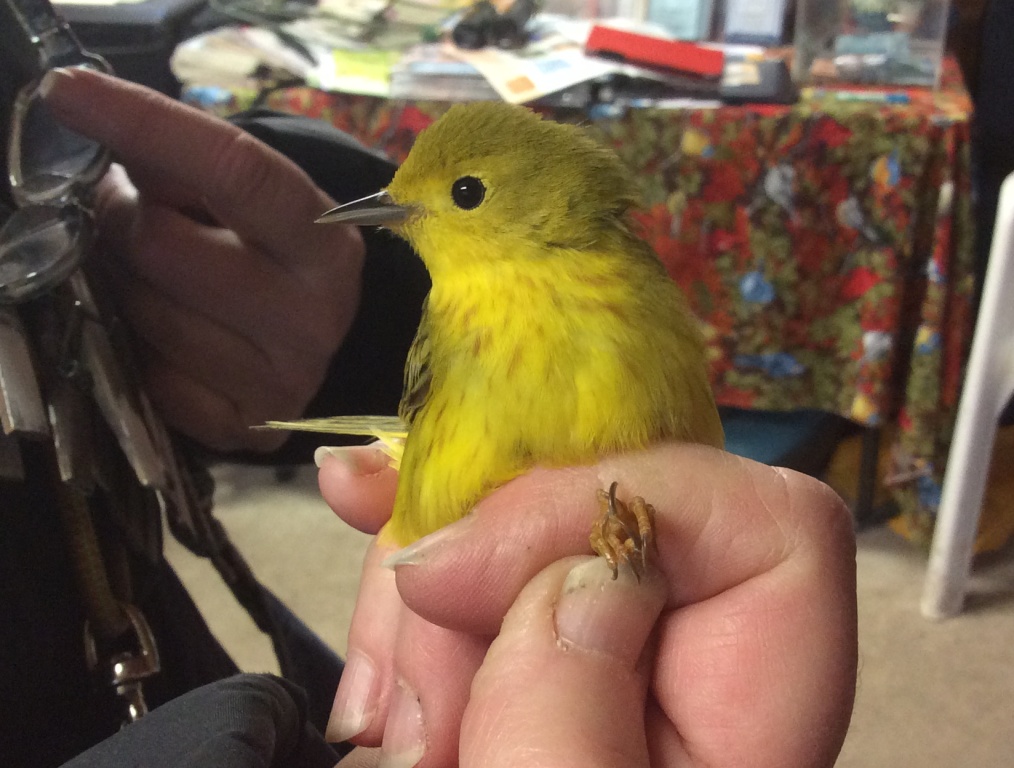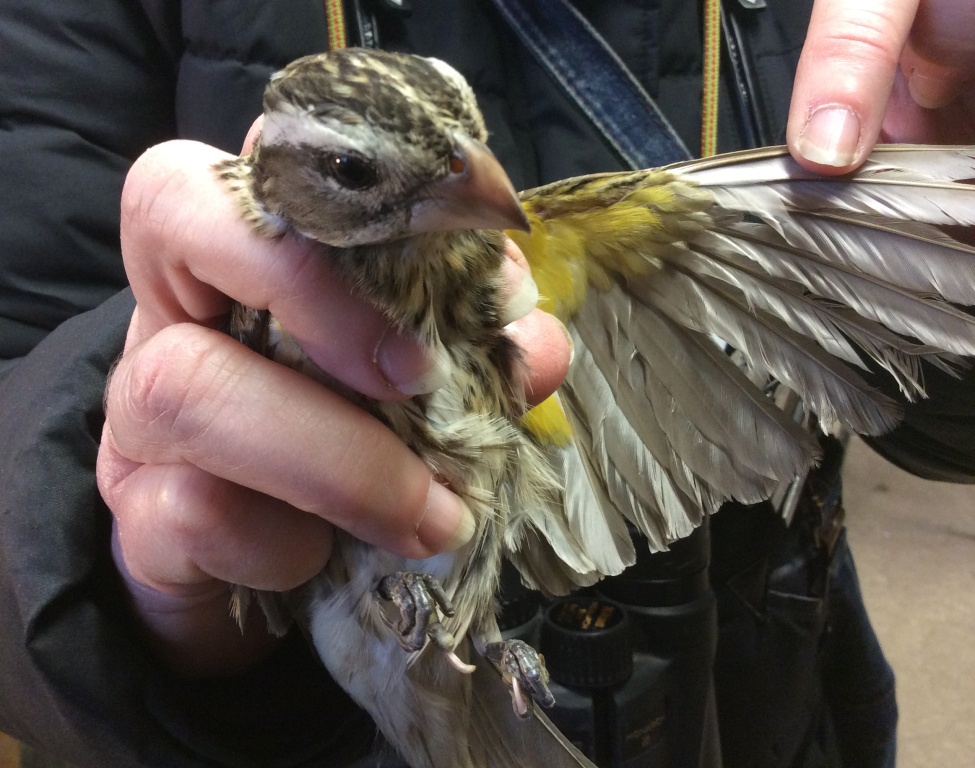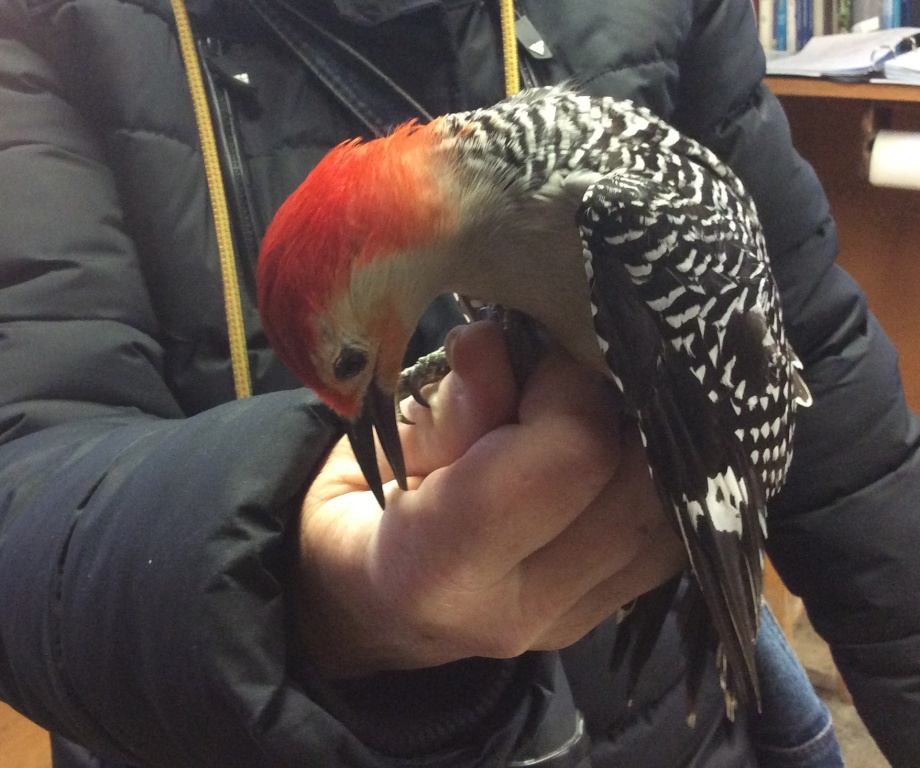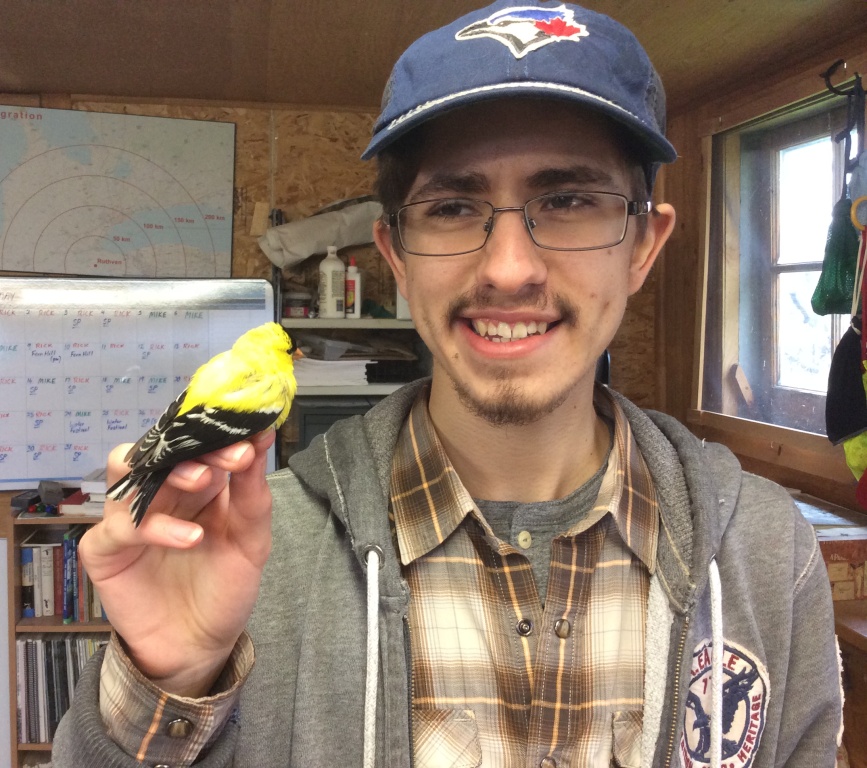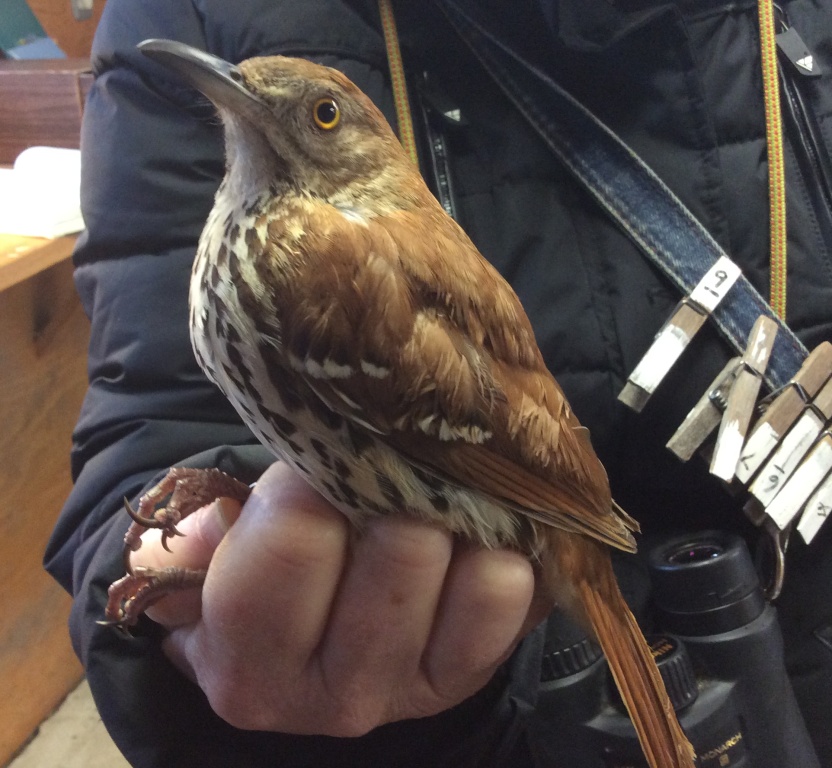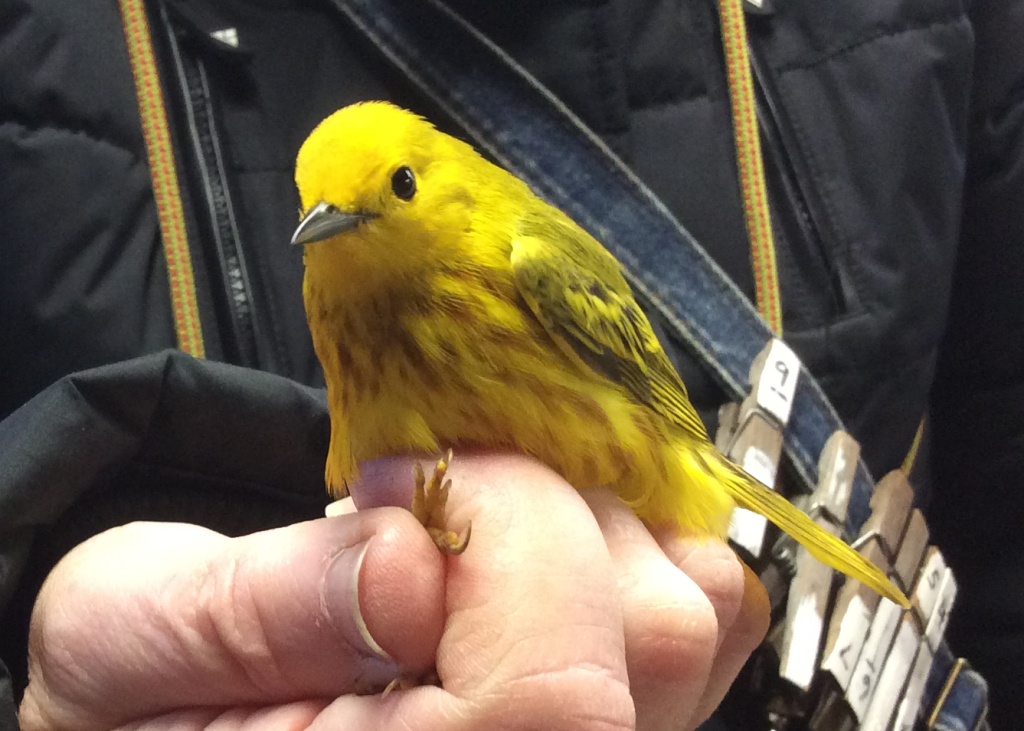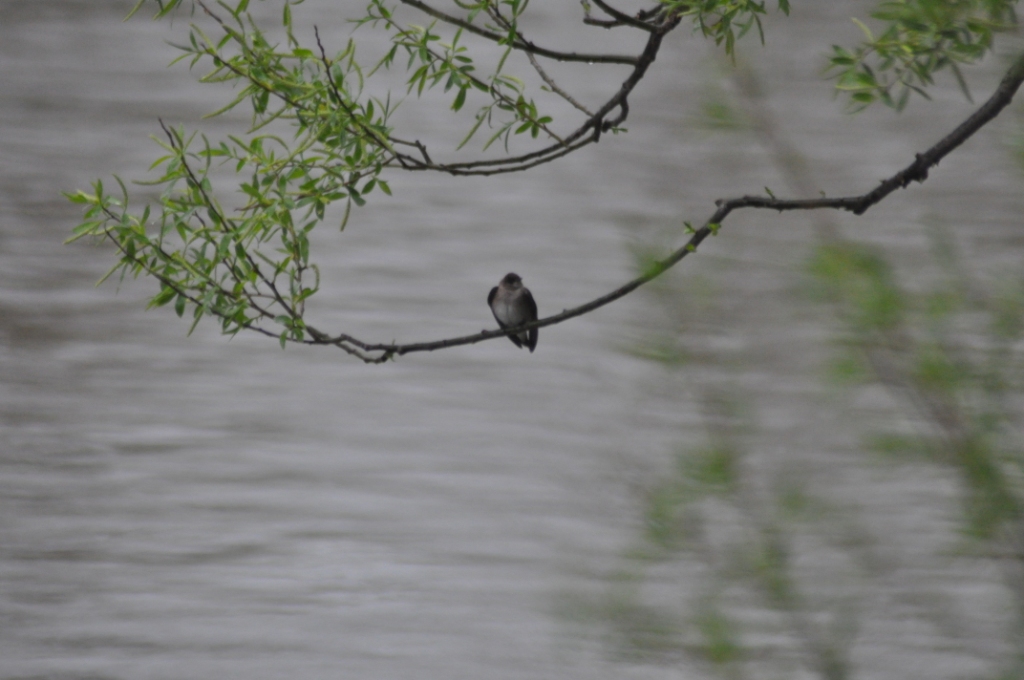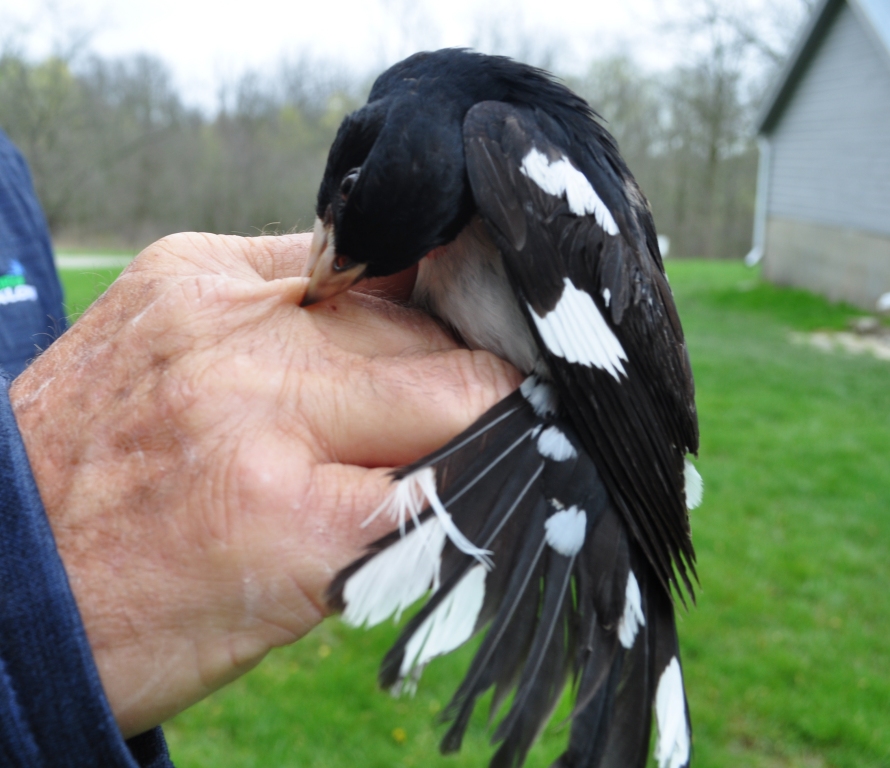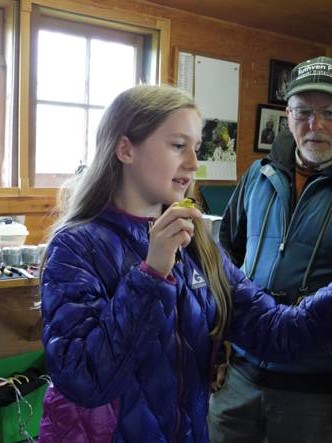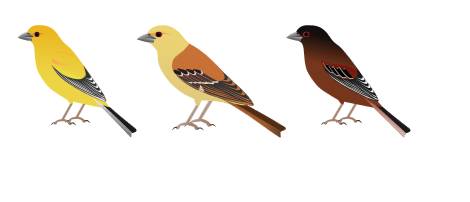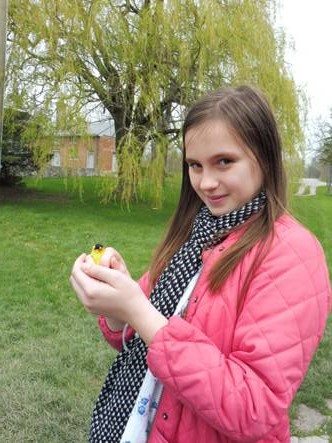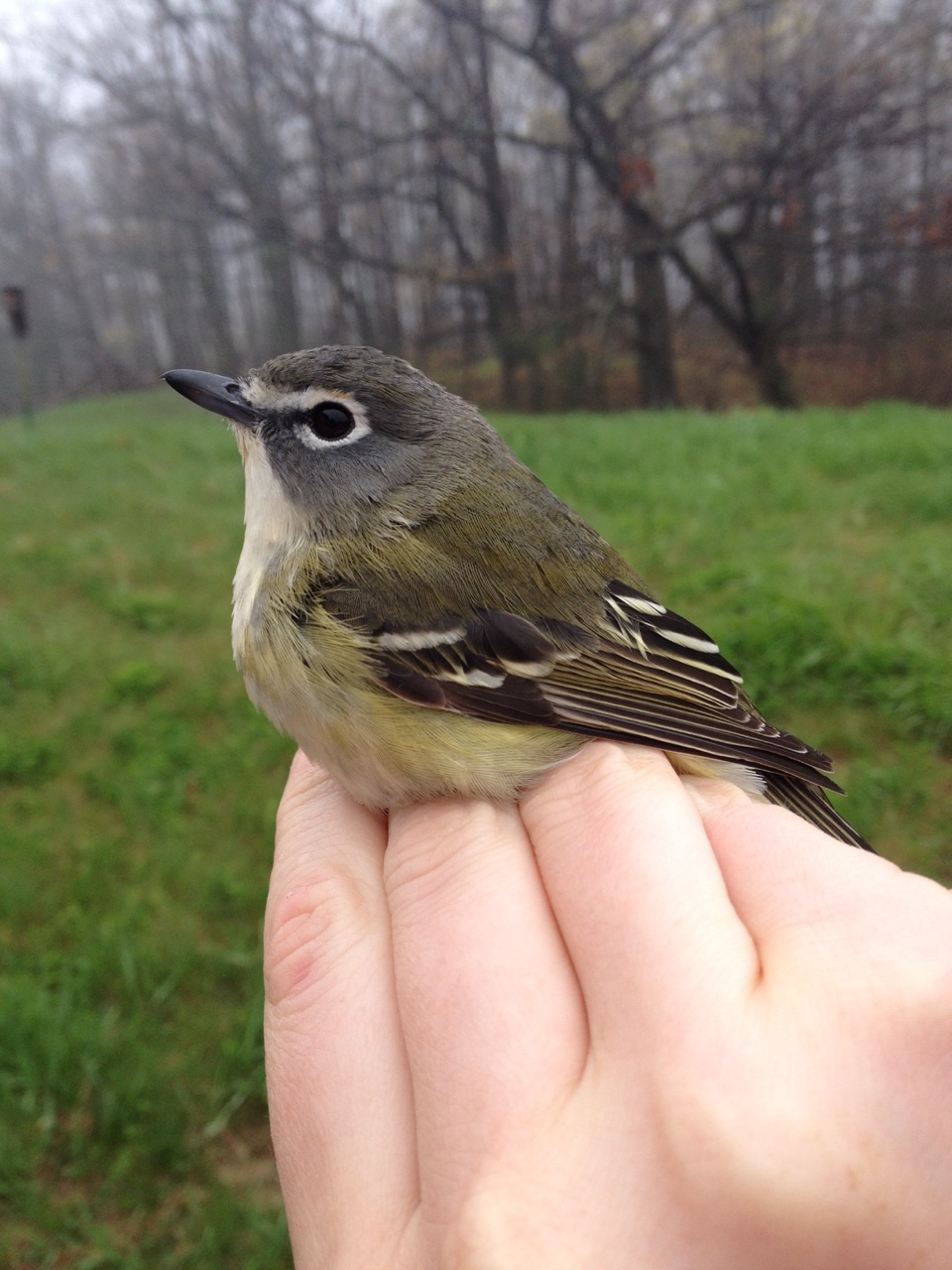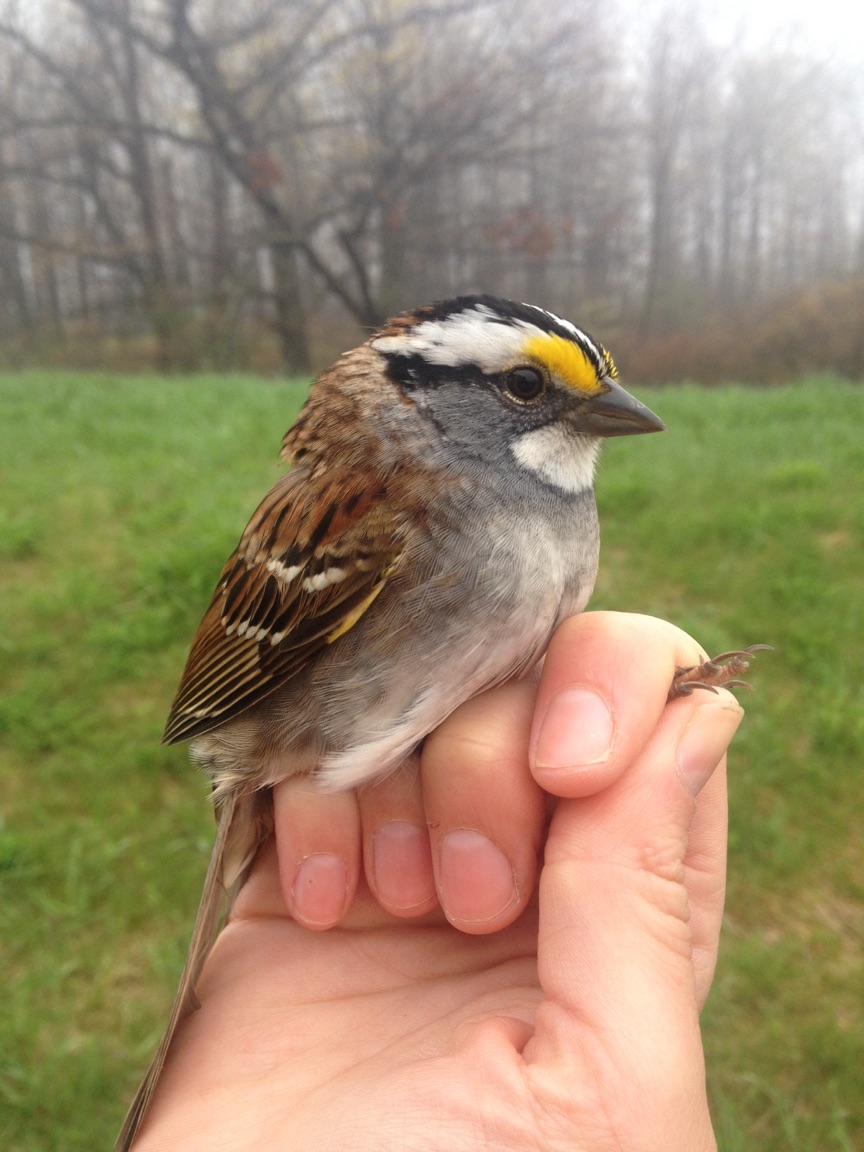The radar weather maps that you can pull up via the web are neat! And surprisingly (to my luddite mind) accurate. This morning I was able to predict when it was okay to open nets and, especially, when it was time to close them down…..the light rain that had just begun to fall was going to turn into a deluge.
We were able to open most of the nets for 3 hours. These, along with the traps, gave us a pretty good indication of some of the birds around. It was busy: we handled 63 birds in that time, 34 of them new bandings. Again, American Goldfinches (aka, “Ruthven Golden Sparrow” – see below) lead the way. We’re getting both “new” birds and old retraps of this species. Some of these retraps seem to have a history of passing through Ruthven on migration(?) but not being seen either during the Summer or Winter. Interesting that they stop here in such numbers – they must know or remember that there is an excellent food source here to be had to fuel their journey.
Birds had been moving during the night as we had 4 new species around this morning: Gray Catbird, Nashville Warbler, Black-throated Blue Warbler, and Black & White Warbler. As well, female Rose-breasted Grosbeaks and Yellow Warblers arrived.
Banded 34:
1 Red-bellied Woodpecker
3 Blue Jays
1 House Wren
2 Gray Catbirds
1 Brown Thrasher
1 Nashville Warbler
2 Yellow Warblers
1 Rose-breasted Grosbeak
1 Chipping Sparrow
1 Field Sparrow
2 Swamp Sparrows
1 White-throated Sparrow
1 Red-winged Blackbird
1 Brown-headed Cowbird
15 American Goldfinches
ET’s: 45 spp.
Ruthven Photo Gallery:
Rick
Here’s a lovely story that arose from Saturday’s visit by the Women in Science group.
An Exciting Discovery – by Diane Green (herself a Woman in Science)
This past week the birding world was rocked by the rumoured sighting of a “Golden Sparrow” at Ruthven Park during a visit by the Larks.
Was this really the first North American sighting of this denizen of the sub-Sahara, or merely the product of an over-active young imagination?
This Saturday a flock of young women scientists descended upon Ruthven to investigate the matter. Through a process of careful scribing, measuring and weighing, the young women have validated the presence, not of a vagrant exotic, but rather of a previously completely unknown sub-species of the Arabian Golden Sparrow.
Distinguishing features include its plaintive “potato-chip, potato-chip” as the flock calls to each other in search of the N. American snack, their primary food source. By comparison the Arabian form exhibits a soft repeated “falafel, falafel “.
As well, the strong black head markings are possibly indicative of an admixture of the Arabian bird’s darker cousins (illustrated below).
Arabian form (shown to the left), Sudan form (centre) shown alongside the chestnut sparrow (right):
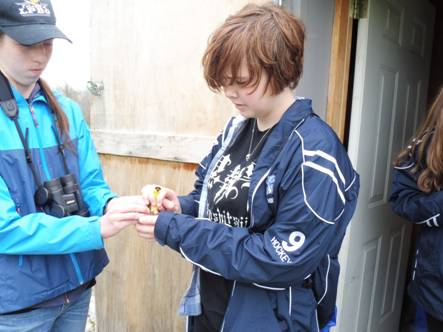
Maddy hands off her first banded specimen of the new sub-species to Emma who releases the Arabian Golden Sparrow, forma Ruthven, noting its distinctive snack-like call. -DG
Fern Hill Burlington
Banding was a short but sweet affair today. Half the school was gone today for a track and field meet, so the whole day felt a little bizarre to me. We only banded two birds before the heavy rain began to fall, but they were really neat. Our morning started off exciting with the first caught and banded White-throated Sparrow of the year! We followed up immediately with a gorgeous Blue Headed Vireo, again our first of the spring. While I was running around inside Janice spotted a female Black-throated Blue Warbler, also the first observed of the year.
It continued to rain off and on throughout the day, and at 11:00AM I brought the grade one students out and into the forest for some outdoor time. They were dressed for the weather and we hunkered down in the forest for a “sit spot”, a time to quietly watch, listen, and generally observe what goes on in a forest when it rains. We noted some birds high up in the tree tops, worms coming out of the dirt, and the smell of the rain. We then ran back in to warm up and spent the rest of our time sketching our favourite birds from field guides.
Katherine
